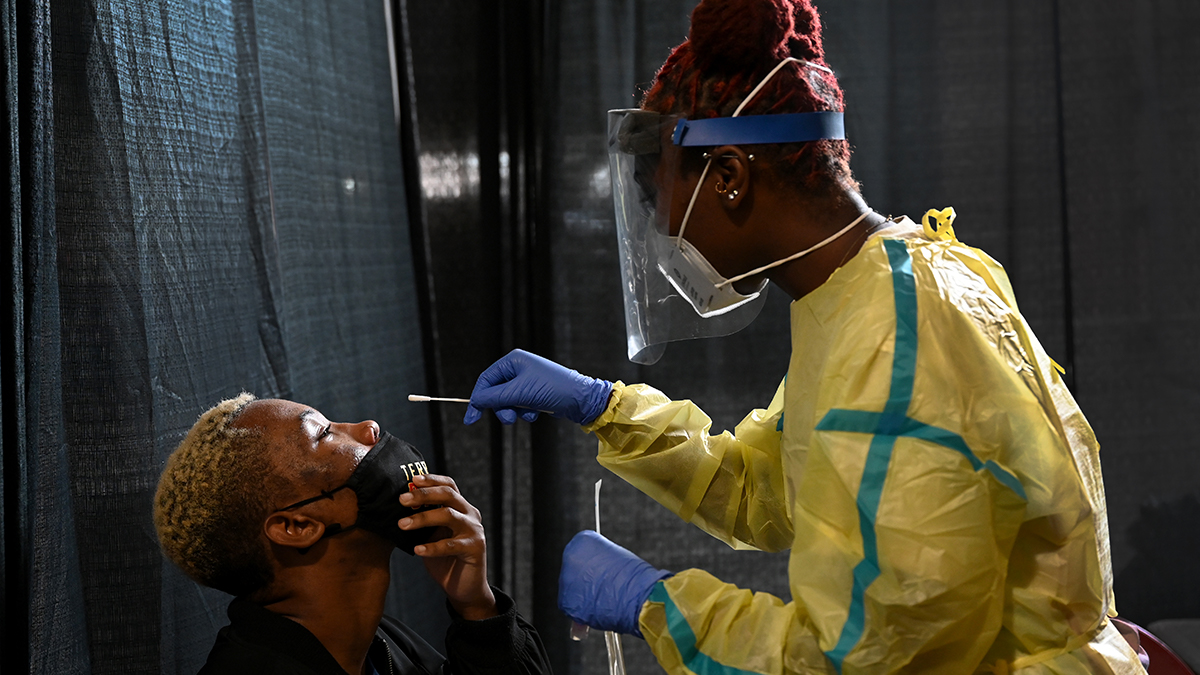Here's the latest on Aug. 19, 2020.
With the unofficial start to fall three weeks away, scientists and medical researchers are trying to anticipate how the change of the season will affect the coronavirus crisis.
Fall means a return to school. While most D.C.-area K-12 schools will begin virtually, some colleges are opening up despite trouble at some campuses that have opened up nationwide, Bowie State University welcomed back 800 students to campus on Monday and Catholic University on Tuesday had freshmen and transfer students move in.
Weather could also affect the pandemic's course. Scientists are looking to South Africa and Australia, where it's currently winter, to forecast what to expect in the northern hemisphere. One early study suggests that lower humidity found in winter could lead to more spread, David A. Andelman, executive director of The RedLines Project, wrote for NBC THINK.
If winter weather does promote the spread of coronavirus, social distancing would become even more key to containing outbreaks.
Researchers at the University of Virginia Biocomplexity Institute looked at three scenarios for the commonwealth. In the best-case scenario for Virginia, about 2,000 daily confirmed cases by October are expected. In the worst case, closer to 3,000 people are expected to be diagnosed every day.
The Centers for Disease Control last week released a reported synthesizing the projections from 13 models that each had different assumptions about social distancing. By Sept. 1, the models together project how many new cases per 100,000 residents each area can expect in a week.
For every 100,000 residents, D.C. may approach 500 new cases, Maryland about 5,000 and Virginia under 10,000 new cases.
We're making it easier for you to find stories that matter with our new newsletter — The 4Front. Sign up here and get news that is important for you to your inbox.
What the Data Shows
The seven-day average of new cases added daily is down compared to last week, falling from 72 to 61 in D.C.; 713 to 627 in Maryland and 998 to 871 in Virginia. They've all declined over the past day, as well.
On Tuesday, D.C. added 52 cases, Maryland diagnosed 520 and Virginia counted 793.
Since a mid-July surge in cases, Virginia has seen cases plateau or begin to recede in most areas. But the surge is still "significant," especially in the far southwestern parts of the state, according to a report from researchers at the University of Virginia Biocomplexity Institute.
Northern Virginia also has seen an increase in the number of hospital beds needed, but isn't expected to exceed capacity before Nov. 1, the report said.
There are bright spots in the data assessing where the region stands in fighting the pandemic.
Maryland's rate of positive tests is continually sliding, hitting a new low point of 3.21% over the week. Prince George's is the only county to have a rate over 5%. People under 35 are also getting a smaller proportion of positive tests.
D.C. has also maintained a positivity rate under 4%.
The map below shows the number of coronavirus cases diagnosed per 1,000 residents.
Coronavirus Cases in DC, Maryland and Virginia
COVID-19 cases by population in D.C. and by county in Maryland and Virginia
Source: DC, MD and VA Health Departments
Credit: Anisa Holmes / NBC Washington
Local Coronavirus Headlines
- Montgomery County, Maryland, announced Tuesday that it has terminated a contract with a Rockville-based company that was providing and processing COVID-19 testing for the county's testing sites. Read more.
- Most people recently diagnosed with the coronavirus in D.C. had no known contact with someone who had the virus and did not attend events or travel, new data from the city says. Read more.
- Montgomery County residents who have been hit financially hard by the coronavirus pandemic can apply for short-term rental assistance. The application is open through Aug. 31.
- Metrorail service has increased to the highest levels since the pandemic began – and more stations are opening soon. Read more.
- Virginia Gov. Ralph Northam unveiled a plan for limited new spending on blocking evictions, boosting high-speed internet access and more. Read about the plan.
- Nearly 600 school bus drivers and food service workers in Frederick County, Maryland, will temporarily be laid off as students learn online during the coronavirus pandemic. Read more.
- With reduced capacity at restaurants across the area, Arlington is facing a problem of people spilling out onto the sidewalk. Here's more.
- Just a day after Montgomery County, Maryland, temporarily shut down COVID-19 testing at four sites, the county announced all of its testing sites will be closed until further notice after the state raised questions about protocols used with some test kits. Read more.
- The monumental decision made by the Big Ten on Tuesday afternoon to postpone its fall football season was a blow to the hopes of coaches, players and fans in College Park. Read more.
- Many Maryland students will start the school year entirely online as the coronavirus pandemic continues — but local PTAs must meet in person, the state PTA says. Read more.
- The Fauquier County School Board voted Monday to switch to virtual-only instruction two weeks before students were expected to return to the classroom. Read more.
- New research by Children’s National Hospital in Washington, D.C., found racial disparities in how the coronavirus affects children. Read more.
Reopening Tracker
- Private and parochial schools in Maryland can choose when to reopen after a back-and-forth between county health officials and the governor. Read more.
- Prince George's County is revising its phase two reopening executive order due to an uptick in coronavirus cases, according to the county executive's office.
- Virginia entered phase three reopening on July 1, loosening restrictions on restaurants, stores, gyms and pools. Northam said more restrictions could be implemented if cases continue to grow.
- Prince George's County entered full phase two on June 23, allowing the MGM Casino and gyms to reopen.
- D.C. entered phase two on June 22, allowing indoor dining, gyms, libraries and houses of worship to reopen with restrictions.
- Montgomery County entered phase two on June 19, reopening with restrictions gyms, houses of worship, indoor dining and retail.
- Maryland entered phase two of reopening on June 10, permitting indoor dining, outdoor pools and outside amusements to reopen.
How to Stay Safe
There are ways to lower your risk of catching coronavirus. Here are guidelines from the CDC:
- Wear a snug-fitting mask that covers your nose and mouth.
- Avoid being indoors with people who are not members of your household. The more people you are in contact with, the more likely you are to be exposed to COVID-19. If you are indoors with people you don’t live with, stay at least six feet apart and keep your mask on.
- Wash your hands often, especially after you have been in a public place.
Sophia Barnes, Andrea Swalec and Anisa Holmes contributed to this report



